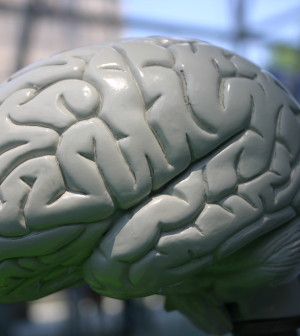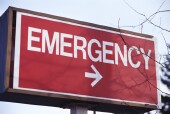- Navigating Your Midlife Crisis: Embracing New Possibilities
- City Raccoons Showing Signs of Domestication
- Mapping the Exposome: Science Broadens Focus to Environmental Disease Triggers
- One Week Less on Social Media Linked to Better Mental Health
- Your Brain Changes in Stages as You Age, Study Finds
- Some Suicide Victims Show No Typical Warning Signs, Study Finds
- ByHeart Formula Faces Lawsuits After Babies Sickened With Botulism
- Switch to Vegan Diet Could Cut Your Greenhouse Gas Emissions in Half
- Regular Bedtime Does Wonders for Blood Pressure
- Dining Alone Could Mean Worse Nutrition for Seniors
Educating Stroke Survivors Helps Them Spot Another Stroke Faster


Stroke survivors who receive extensive stroke education are much more likely to recognize symptoms of another stroke and seek immediate treatment, a new study shows.
The research included nearly 1,200 Hispanic, black and white survivors of mild stroke or transient ischemic attack (TIA). Their average age was 63. They all received culturally tailored educational material about recognizing and reacting to stroke symptoms.
Some of the patients also underwent in-hospital group sessions in which they practiced how to describe stroke symptoms to emergency medical services workers and watched videos from stroke survivors on preparedness.
Over five years of follow-up, 224 of the patients had another stroke or experienced stroke-like symptoms. Forty-two percent of those patients arrived at an emergency department within three hours.
Only 28 percent of patients in the study had gone to the ER within three hours when they had their first stroke or TIA. So, the stroke education led to a 49 percent improvement in the rate of people getting to the hospital quickly. Among Hispanics, there was a 63 percent increase, the researchers noted.
That timeframe is important because the clot-busting drug tPA is approved by the U.S. Food and Drug Administration to be given within three hours of the start of stroke symptoms.
The study was published June 11 in the journal Stroke.
“The continued low rates of people arriving to the emergency department within three hours of stroke symptoms suggests that we may not be effectively disseminating existing materials on stroke preparedness,” study author Bernadette Boden-Albala, a professor of public health, dentistry and neurology, and associate dean of program development at the Global Institute of Public Health at New York University, said in a journal news release.
“Our findings suggest that at minimum, clear, simple, preparedness-focused messages before hospital discharge — and possibly follow-up reinforcement — results in greater proportion of early emergency room arrivals,” she added.
Boden-Albala noted that racial and ethnic minorities are more likely to have stroke, and they’re more likely to have worse outcomes from their strokes compared to whites. Another important difference, she said, is that minority patients often come later to the emergency room for treatment.
“Our study is the first to show that culturally tailored, health literature educational materials can decrease these racial disparities in stroke preparedness outcomes,” she said.
More information
The U.S. National Heart, Lung, and Blood Institute has more about stroke.
Source: HealthDay
Copyright © 2025 HealthDay. All rights reserved.










